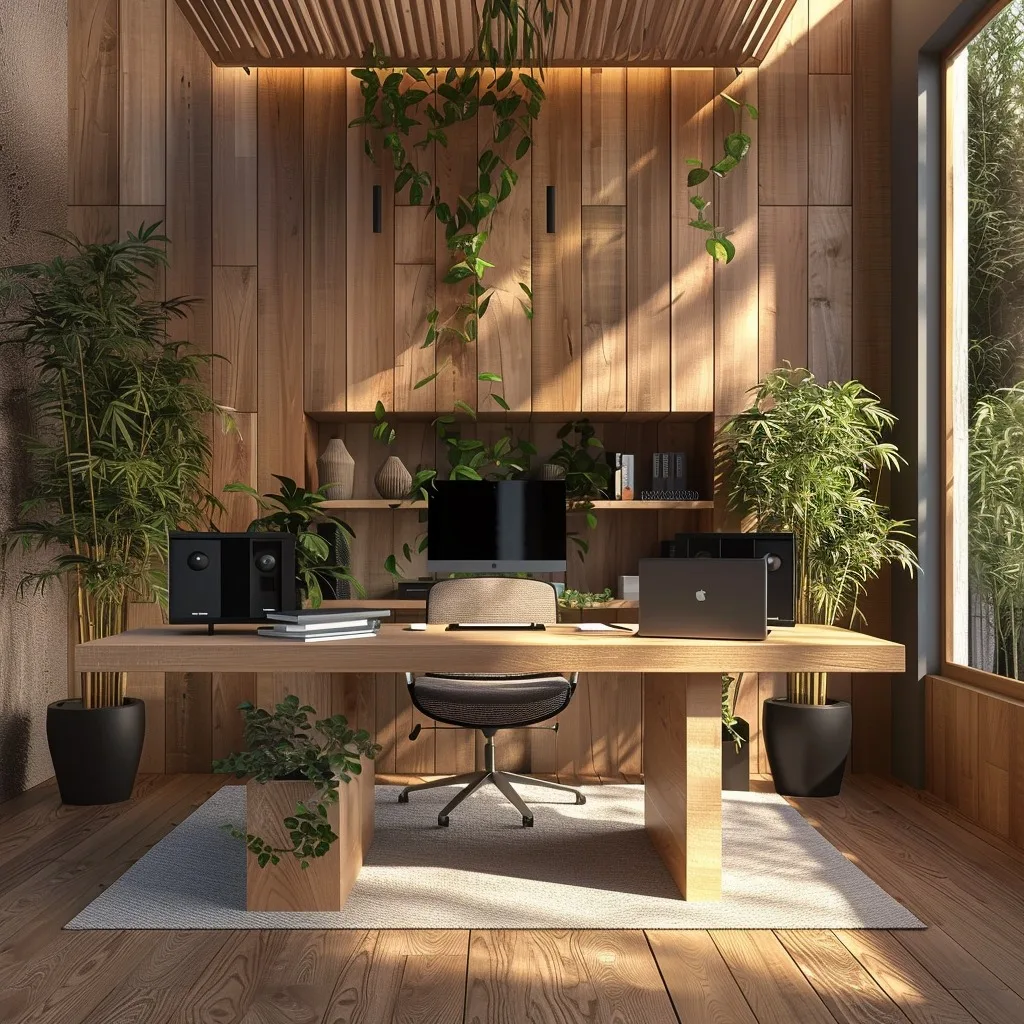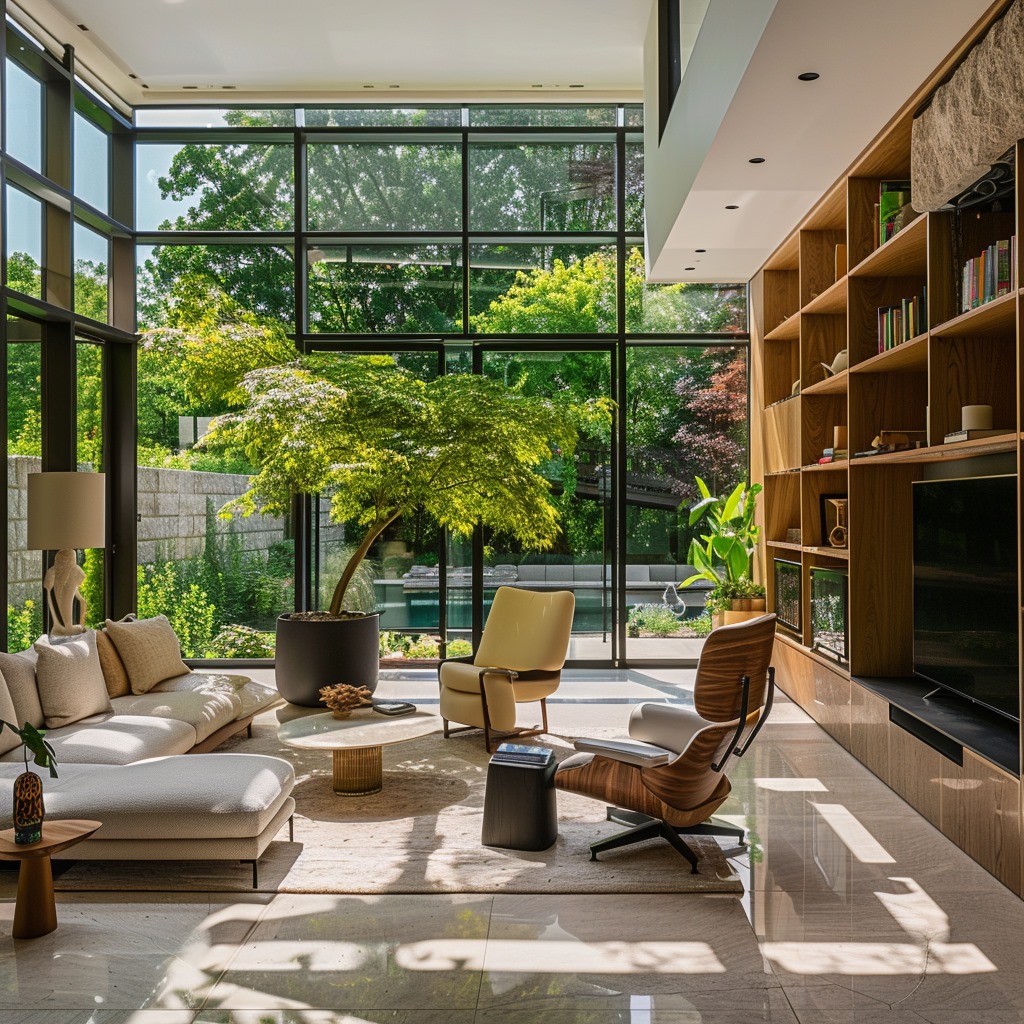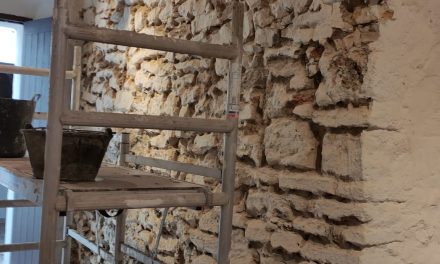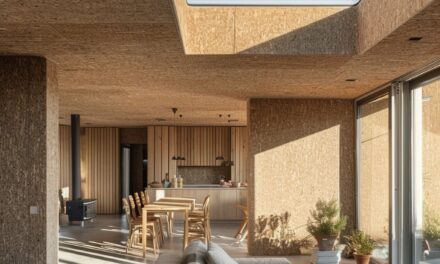Creating a peaceful and harmonious living environment cannot be underestimated. Your home should be a haven where you can escape the chaos of life. One often overlooked aspect of a serene home is acoustics. By incorporating natural sound insulation combined with elements that mimic the soothing sounds of nature, you can create a tranquil atmosphere that promotes relaxation and enhances your overall well-being.
Effective Sound Insulation using VOC-Free Materials
Homeowners often struggle with outside noise entering their living spaces. Sounds from traffic, construction, or loud neighbours can disturb your peace and make it hard to concentrate or relax. By using effective sound insulation techniques, you can significantly reduce these disturbances and create a more peaceful environment.
In addition to blocking external noise, it’s also important to minimize echoes within your home. As homes become larger and more open, echo issues can arise. Fortunately, ECS has the expertise to address these problems effectively, thanks to years of experience in the field.
When selecting materials for your home, it’s crucial to choose VOC-free options. Volatile Organic Compounds (VOCs) are chemicals that can release harmful gases into the air, which can pose health risks. Opt for eco-friendly insulation materials that are free from VOCs to create a healthy and safe living environment. These natural materials can also enhance your sense of tranquillity.
Furthermore, it is worth noting that sound insulation not only enhances the acoustic comfort within your home but also contributes to energy efficiency. By reducing the amount of noise entering or leaving your property, you can also improve the thermal performance of your building. This dual benefit not only creates a quieter and more comfortable indoor environment but also helps in cutting down energy costs.
When selecting sound insulation materials, consider factors such as density, thickness, and installation methods to ensure optimal performance. Additionally, consulting with a professional acoustic engineer can provide valuable insights and recommendations tailored to your specific requirements, ensuring that you achieve the best possible results in soundproofing your home. We recommend Diathonite a mixture of cork, lime and clay (mortero de cal y corcho in Spanish).
Unwanted Echoes in Your Home
Have you ever walked into a room and noticed a distinct echo? Unwanted echoes can detract from the overall comfort of your home, making it feel cold, cavernous, and inhospitable. To combat this problem, consider incorporating sound-absorbing materials into your interior design if you cannot use Diathonite on your walls, or don’t like the idea of a polished Diathonite wall.
Strategically placing soft furnishings, such as curtains, rugs, and upholstered furniture, can help to dampen echoes and create a more pleasant acoustic environment. Additionally, incorporating sound-absorbing panels or acoustic wall coverings can further minimize sound reflections and reverberations.
Furthermore, the layout and design of a room can significantly impact its acoustics. High ceilings, large windows, and hard surfaces like wood or tile flooring can contribute to echo problems. To address this, consider adding ceiling baffles or acoustic clouds to break up sound waves and reduce reverberation.
Another effective solution is to introduce bookshelves filled with books, as they not only add a decorative element to the room but also help absorb sound. Plants can also serve a dual purpose by adding a touch of nature while absorbing sound waves, particularly those with dense foliage.
The Psychological Benefits of Natural Soundscapes at Home
Did you know that exposure to natural soundscapes, such as the gentle rustle of leaves or the soothing sound of flowing water, can have a positive impact on your psychological well-being? Studies have shown that these sounds can help reduce stress, lower blood pressure, and improve overall mood.
Integrating natural sound elements into your home allows you to reap these psychological benefits. Consider incorporating a slow water feature, such as a mini waterfall or even just a tabletop fountain, which can create a calming ambience and mask unwanted noise. You could also introduce potted plants to your living spaces, as the sound of leaves gently rustling in the breeze can evoke a sense of tranquillity.
Natural soundscapes offer more than just psychological benefits – they can significantly enhance cognitive function and spark creativity. Studies show that the soothing sounds of nature stimulate the brain, leading to clearer thinking and improved focus.
Implementing this calming atmosphere in your space is surprisingly simple. By pairing Sonos Era speakers with Philips Hue lighting, you can create a harmonious environment that combines soft, ambient lighting with relaxing natural sounds. This combination works synergistically to calm the mind, fostering an ideal setting for both creative pursuits and relaxation.
Whether you’re looking to boost productivity in your home office or create a tranquil retreat in your living room, this seamless integration of audio and visual elements can transform your space into a nature-inspired oasis. The gentle interplay of light and sound mimics the restorative qualities of the outdoors, bringing the benefits of nature indoors and promoting overall well-being.
Incorporating Biophilic Design for Acoustic Comfort
The concept of biophilic design centres around the integration of nature into human-made environments. By bringing elements of nature indoors, you can create a more harmonious living space that promotes both physical and mental well-being.
Biophilic design not only enhances the visual aesthetics of your home but also contributes to acoustic comfort. Incorporating natural materials, such as wood or bamboo, can help absorb sound and reduce reverberation. Furthermore, introducing natural light through large windows or skylights can create a sense of connection with the outdoors and enhance the overall ambience of your living space.
When considering biophilic design for acoustic comfort, it is essential to think about the layout of the space. Utilising natural shapes and forms in your furniture and decor can help diffuse sound waves and create a more soothing environment. For example, incorporating curved or irregularly shaped furniture pieces can help break up sound reflections and reduce noise levels.
Soundproofing Techniques to Preserve Natural Sound Qualities
While it is important to minimize external noise, it is equally essential to preserve the natural sound qualities within your home. Heavy synthetic soundproofing can sometimes result in an artificial and sterile environment, devoid of any character or warmth.
When implementing natural soundproofing techniques, with a balance between insulation and maintaining the richness of natural sound characteristics. Consider using sound-absorbing materials such as Diathontie, clay, mineral cement and lime that do not completely deaden the acoustics, but allow calming sound elements to resonate throughout the space.
One innovative approach to soundproofing that has gained popularity in recent years is the use of eco-friendly materials. These materials not only help in reducing noise pollution but also have a minimal impact on the environment. For example, polished Diathonite has a base of lime, clay and cork which is smooth to the touch and warms arny space whilst being an acoustic and thermal insulator.
Furthermore, incorporating natural elements into your soundproofing strategy can enhance the overall aesthetic appeal of your living space. Consider incorporating wooden panels or cork oak slabs into your soundproofing design. These materials not only absorb sound effectively but also add a touch of warmth and sophistication to your home decor, creating a harmonious blend of functionality and style.

Living Space: Create a multifunctional family room with adaptable acoustic treatments for movie nights or quiet reading times. Utilize sustainable materials like bamboo flooring and integrate interactive displays showcasing local wildlife and natural sounds to educate and entertain.

We are currently collaborating with or actively testing more than 20 brands that align with our rigorous standards.










